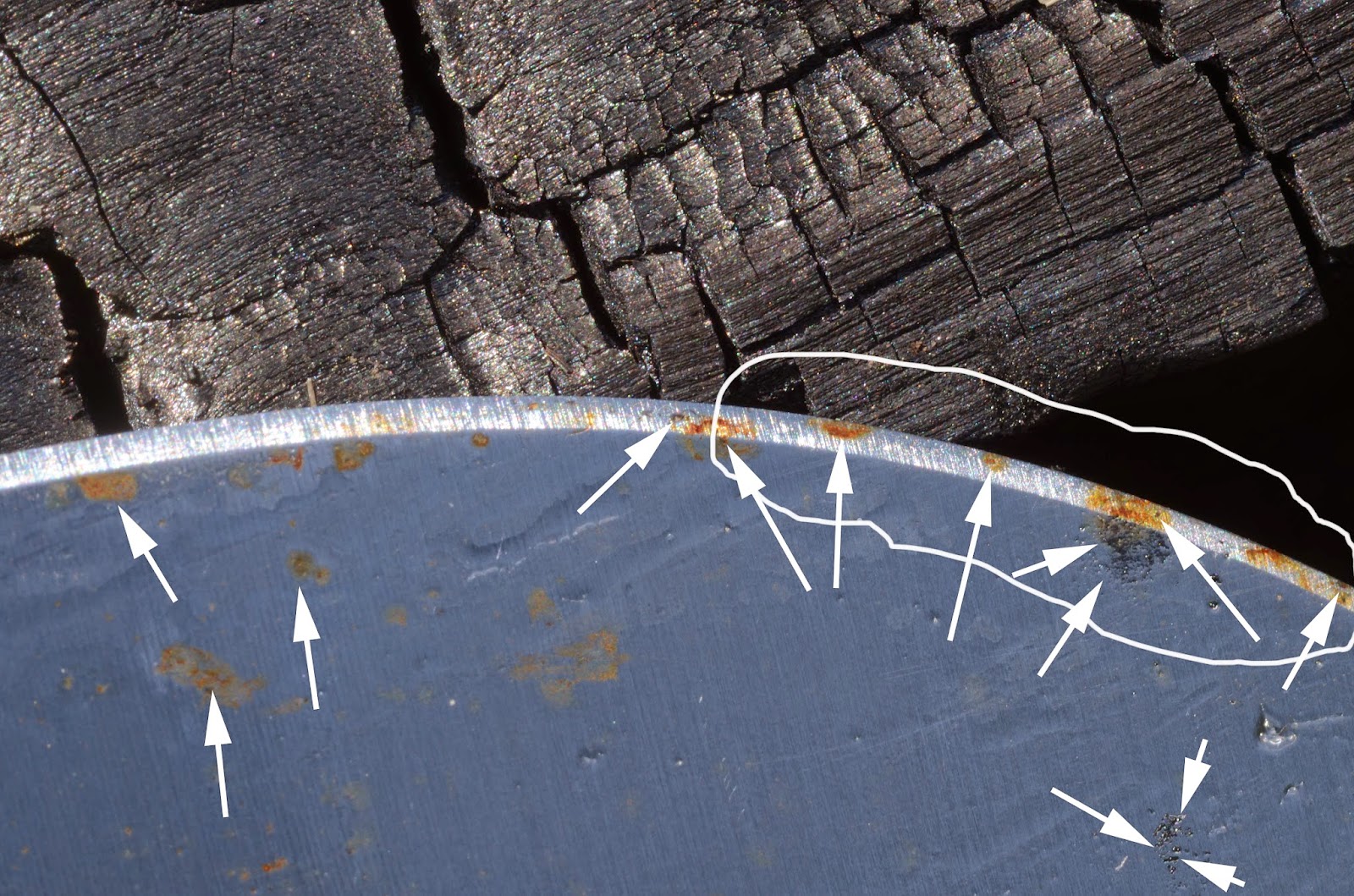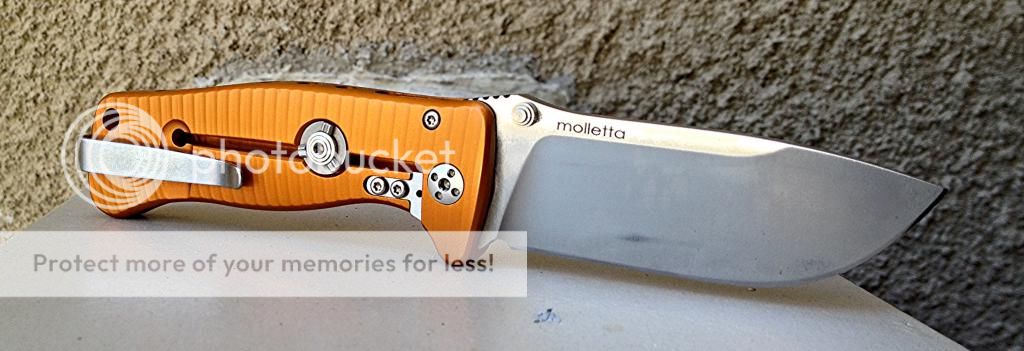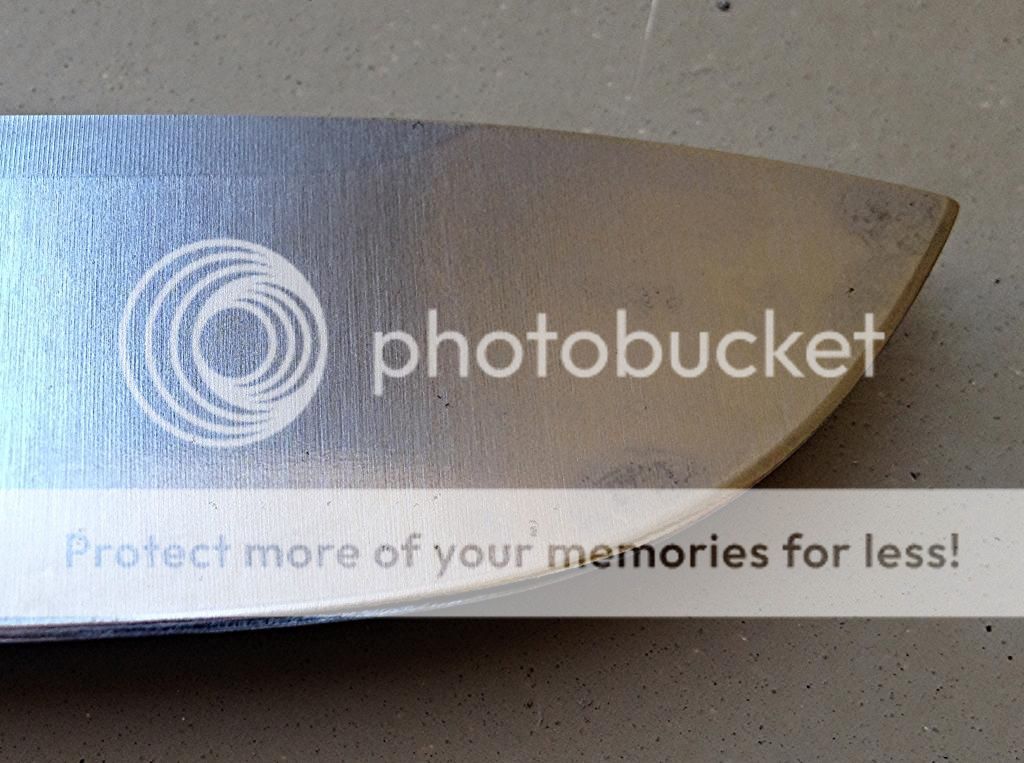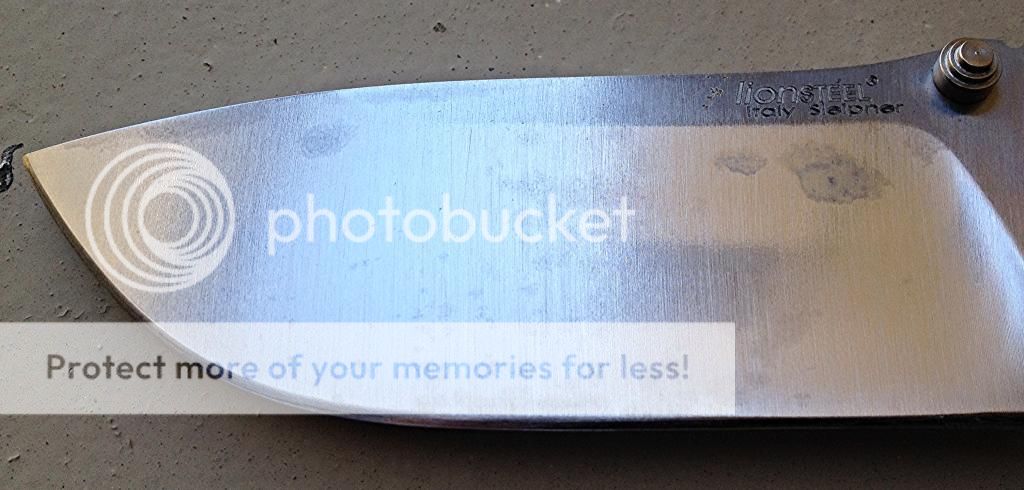Hi everyone, my questions are; Is Sleipner alloy from Uddeholm really suitable for outdoor knife manufacture? It has less Chromium (Cr) than D2 and it's primary application is in the tooling industry where non corrosive lubricants would be used around the tools. Or are we really just reinventing the wheel? My D2 blades don't chip, my AISI440C/N695 blades chip even less. I don't dispute the supposed added toughness of the Sleipner, though remembering LionSteel do not guarantee the M7 against anything other than cutting tasks more or less-correct me if I'm wrong here.
Also if the Sleipner is PVDed then this ceramic nitride coating will definitely add corrosion resistance EVEN if there are alloy defects (pleanty of metallurgy papers discussing this) I know from correspondence with Gianni that the black coated version of the M7 is chemically blacked, so it's not a nitriding.
My M7 after a brief submersion in fast flowing freshwater (a flooding river actually) has undergone corrosive pitting (the satin finish). I know it is NOT a stainless steel as far as the definition of stainless steel goes, as I would expect some rust without care even with the limited Cr but Mn around 0.5%, 0.2% might be better to resist corrosion but then this would not be the same alloy, ok.
I wrote to Uddeholm requesting some comments but am still awaiting any reply. The pitting is confined towards the last 5-6cm of blade from the tip backwards and present more on one side than the other. This was not saltwater submersion but river water. Anyway here are some pictures:
Apologies for the large image, I have indicated the various regions with an overlay in Photoshop, other than that these are the original images.

For full details please see the following:
http://hardcorecampingtools.blogspot.com/2014/08/lionsteel-m7-and-sleipner-steel-ok-here.html
I'm not after a warranty issue (that is unless the situation changes drastically-ie the blade continues to pit, especially on the edge surfaces) just trying to understand why. The blog explains some of the science behind the process. General rusting,corrosion is ok for example most carbon steels such as 1095, but pitting can be a problem if the pits migrate into the blade un noticed because they are small. The only way to stop them is to physically remove them; protect from galvanic reactions (pretty difficult in real life usage of a knife meant for the outdoors) and or protect from oxygen, ok the latter can be effected by a light coating of edible oil.
All comments welcomed
Has anyone else notice this on their M7.
BTW the liquid you see is NOT water but sunflower oil.

Also if the Sleipner is PVDed then this ceramic nitride coating will definitely add corrosion resistance EVEN if there are alloy defects (pleanty of metallurgy papers discussing this) I know from correspondence with Gianni that the black coated version of the M7 is chemically blacked, so it's not a nitriding.
My M7 after a brief submersion in fast flowing freshwater (a flooding river actually) has undergone corrosive pitting (the satin finish). I know it is NOT a stainless steel as far as the definition of stainless steel goes, as I would expect some rust without care even with the limited Cr but Mn around 0.5%, 0.2% might be better to resist corrosion but then this would not be the same alloy, ok.
I wrote to Uddeholm requesting some comments but am still awaiting any reply. The pitting is confined towards the last 5-6cm of blade from the tip backwards and present more on one side than the other. This was not saltwater submersion but river water. Anyway here are some pictures:
Apologies for the large image, I have indicated the various regions with an overlay in Photoshop, other than that these are the original images.

For full details please see the following:
http://hardcorecampingtools.blogspot.com/2014/08/lionsteel-m7-and-sleipner-steel-ok-here.html
I'm not after a warranty issue (that is unless the situation changes drastically-ie the blade continues to pit, especially on the edge surfaces) just trying to understand why. The blog explains some of the science behind the process. General rusting,corrosion is ok for example most carbon steels such as 1095, but pitting can be a problem if the pits migrate into the blade un noticed because they are small. The only way to stop them is to physically remove them; protect from galvanic reactions (pretty difficult in real life usage of a knife meant for the outdoors) and or protect from oxygen, ok the latter can be effected by a light coating of edible oil.
All comments welcomed
Has anyone else notice this on their M7.
BTW the liquid you see is NOT water but sunflower oil.





